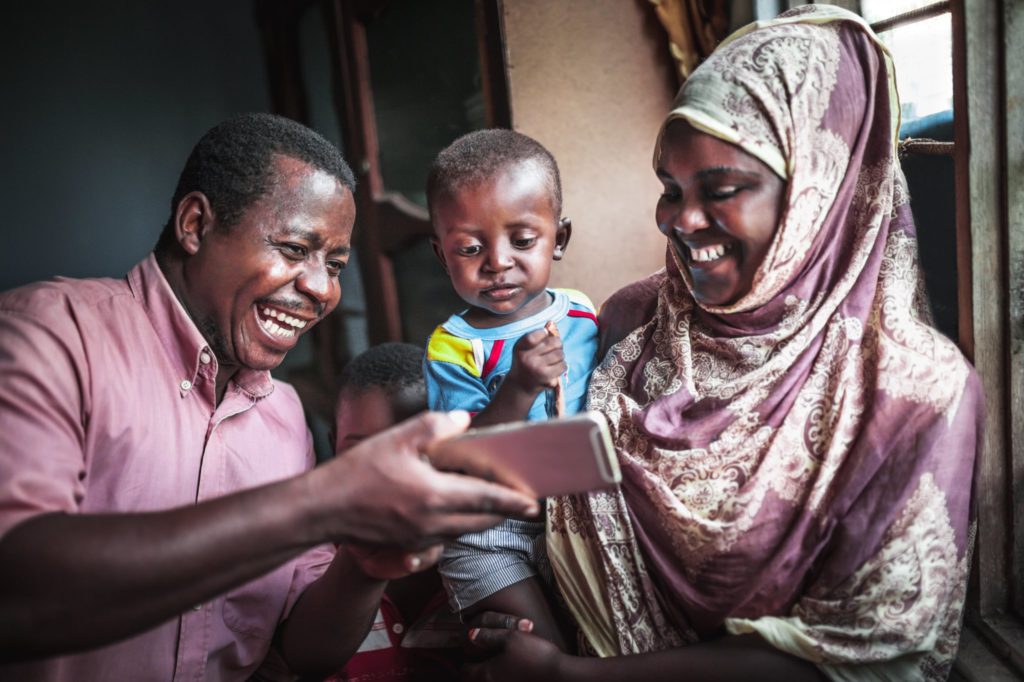Despite the COVID-19 pandemic, the GSMA has released its global State of Mobile Internet Connectivity Report 2021, which shows that more than half of the world’s population currently uses the mobile internet.
Mobile internet usage now totals just over 4 billion people, up 225 million from 2019 and up from a third of the world’s population just six years ago.
Despite this excellent development in mobile internet access, both in terms of coverage and usage, the report emphasizes that progress toward closing the digital divide must be accelerated.
Only 450 million of the 3.8 billion people who are still unconnected live in places without mobile broadband connectivity (the coverage gap).
Year after year, the coverage gap has narrowed significantly.
The far greater difficulty is the 3.4 billion people who reside in locations where mobile broadband is currently available but aren’t using it (the “usage gap”).
The report looks at trends in mobile internet coverage and usage over the previous six years and highlights the major roadblocks to mobile internet adoption.
It also examines the COVID-19 pandemic’s early consequences as well as the most notable geographical repercussions.
Finally, it offers suggestions for bridging the digital divide and ensuring more mobile internet connectivity.
“The COVID-19 pandemic highlighted the importance of mobile internet connection in people’s lives and livelihoods, hastening the global digital transition. In low- and middle-income nations, mobile is the major, and often the only means of accessing the internet. While more individuals are accessing mobile internet than ever before, several fundamental impediments prevent far too many people from doing so. “All of us — government and industry – must do more to address this usage gap,” says John Giusti, Chief Regulatory Officer of the GSMA. “We must address the major impediments to using mobile internet services, including literacy and digital skills, as well as price. We can only close the digital divide by taking targeted, concerted action.”
The mobile internet coverage and usage gap is closing.
The coverage gap has narrowed over the last six years: about a quarter of the world’s population did not have access to a mobile broadband network in 2014.
By the end of 2020, that figure had dropped to barely 6%.
With the most development made between 2014 and 2018, 94 percent of the world’s population now has access to a broadband network.
By 2020, global coverage will have increased by one percentage point, from 93% to 94%.
The number of people living in places without a mobile broadband network was lowered to 450 million as a result of this.
Those who reside in sparsely populated rural locations with challenging terrain are more likely to be exposed.
For the second year in a row, the number of persons utilizing mobile internet has increased: yet, the utilization gap remains considerable, accounting for the bulk of the unconnected.
In 2020, 3.4 billion individuals (43 percent of the global population) lived within a mobile broadband network’s coverage area but did not have access to mobile internet services.
The utilization disparity is now seven times higher than the coverage gap, despite the fact that it is shrinking.
Due to increased mobile broadband coverage, the use gap accounted for 64 percent of the total disconnected population in 2014, although this figure is expected to rise to 88 percent by 2020.
LMICs now account for about 93 percent of the world’s unconnected population and nearly 98 percent of the uncovered population.
East Asia (61 percent), which expanded by 4 percent between 2019 and 2020, saw the most substantial increase in mobile internet usage.
Obstacles to using the internet on a mobile device
The epidemic has underlined the importance of mobile internet access for individuals all over the world’s social and economic well-being.
People with mobile internet connections might keep in touch with friends and family, conduct business, obtain important information and services, and otherwise break up the monotony of lockdown life.
Despite living in areas where mobile broadband networks are available, 47 percent of the population in LMICs does not use the internet.
Obstacles to using the internet on a mobile device
The epidemic has underlined the importance of mobile internet access for individuals all over the world’s social and economic well-being. People with mobile internet connections might keep in touch with friends and family, conduct business, obtain important information and services, and otherwise break up the monotony of lockdown life.
Despite living in areas where mobile broadband networks are available, 47 percent of the population in LMICs does not use the internet.
The most significant impediment to adoption is a lack of awareness about mobile internet and its benefits, as well as literacy and digital abilities.
Nearly a quarter of persons in the surveyed nations are unaware of the benefits of mobile internet.
Affordability: Due to the economic impact of the COVID-19 epidemic, internet-enabled handsets and data became less cheap in several LMICs in 2020.
These limitations disproportionately affect certain groups of individuals, particularly women and those who live in rural areas.
A Team-Based Approach
The global climate problem demonstrates how mobile connectivity may save lives in times of crisis, reinforcing the significance of doing more to expand mobile service access.
The only solution to bridge the digital gap is for people to overcome their barriers to accessing and using mobile internet in a concerted effort.
All stakeholders, including mobile operators, policymakers, the government, and the broader commercial sector, must take a specific action.
This paper is the result of a collaboration between the UK Foreign and Commonwealth Office (FCDO) and the Swedish International Development Cooperation Agency (SIDA) (Sida).
The opinions presented do not necessarily reflect the positions of either organization.
Here is a link to the GSMA’s State of Mobile Internet Connectivity 2021 report.
Read more on Tech Gist Africa:
South Africa ranks first in the African Tech Ecosystems, according to report
Nairobi is Africa’s most innovative city, according to reports
Consumers spent almost $900 Billion more online in 2020 – Mastercard reports
